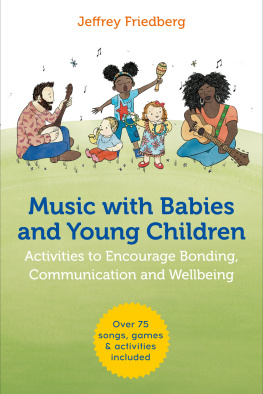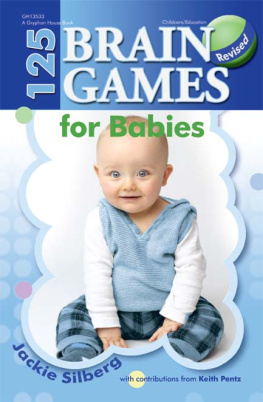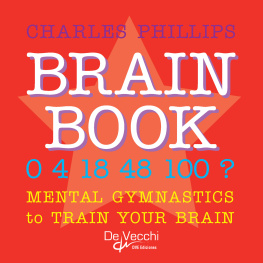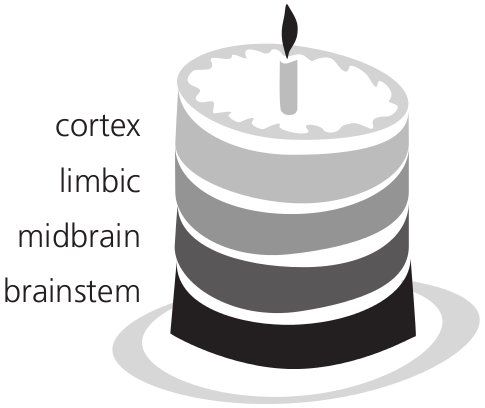The names of the children used as examples in this book are fictitious, and any similarity to actual names is purely coincidental.
We are designed for the natural world, yet we live in an invented world, dramatically different from that of our ancestors.
T odays babies are restricted in movement opportunities by our inventions. Wrapped in a swaddling blanket for security, placed on their backs in a cot, strapped in the car seat for safety, slouched in the baby buggy, strapped in the high chair, propped up in front of the TV. Its all too easy for a day to pass without any exercise. The consequences of this lack of exercise affect our babies health, how they relate emotionally, how they communicate, and how they learn. This is because exercise is an essential ingredient for our babies ability to fully express their learning potential.
Have you ever wondered why babies are born so helpless? Newborn foals can stand up and run within hours because they are born with a well-developed brain. This enables excellent physical coordination, almost straight away. On the other hand, a human baby is born with an undeveloped brain; the brain cells are only loosely connected at birth. This results in an uncoordinated body. It will take at least a year for the baby to learn to walk, and another four years for the brain to be fully formed. The brain cells will continue to connect and strengthen until puberty, at which time a hormone is secreted which dissolves weakly formed connections.
What is exciting is that this very immature brain is central to our ability to survive and learn to be uniquely human. Because our brain is so immature at birth, we are dependent on our caregivers for an exceptionally long in-arms period. This gives us as a species the unique opportunity to learn from our caregivers, as well as from our environment. This prolonged contact with these dual stimuli allows the human baby to develop memory and intelligence.
The development of a powerful memory is what sets us apart from the rest of the animal kingdom. Memory enables us to develop new levels of intelligence from generation to generation, as each generation retains useful survival information and passes new knowledge on to its successor. We have the ability to nurture memory and intelligence in our offspring. What babies learn from their caregivers in the first five years literally forms their brain structure.
When we nurture our babies in safe, stimulating environments, our children learn empathy and sharing, fully expressing their developmental potential. They grow to develop their own natural, intrinsic intelligence. Dr Bruce Perry compares the developing brain to a four-layered sponge cake. It is a simple model that gives key information for developmentally well-informed caregiving.
- The bottom layer, the brainstem, is developed through lots of love and cuddles. This layer is small and mighty and develops up and out, continuing to grow as the other layers grow. It is the foundation for all future learning.
- The second layer, the midbrain, is developed through exercise, rhythm, music and movement.
- The third layer, the limbic system, is developed through playing with friends and family.
- The fourth layer, the cortex, is developed through reading, writing, arithmetic and humour.
The brain develops these layers in a delicate sequence from the brainstem upwards and outwards to the cortex. Development of the lower layers greatly supports development of upper layers. When lower layers are not well developed, then the upper layers may not function at their best. So, a lack of early experiences of in-arms nurturing and physical development, for example, can greatly restrict the full development of the cortex and the multiple intelligence that it enables. Many teenagers in the US can read, but dont read for pleasure.
This book describes a range of processes and activities that support this natural sequence of brain development. These activities are arranged in developmental sequence in four sections, reflecting Perrys model of the brain. In many cases the exercises comply with the exact sequence in the model. In other cases the activities reflect the cyclic nature of development, as different regions of the brain develop simultaneously.
This book is the result of years of experience working with babies, preschoolers and their parents in our fit-for-learning physical development programme, Jumping Beans. Although the book follows a rough chronological order from birth to the age of five, we have deliberately not put in precise ages to avoid comparisons. All babies and children develop at their own rate and developmental age is more important than chronological age.
It is no accident that many of the exercises in this book develop balance. Our world is out of balance. We have lost touch with the natural rhythms of the earth sit side by side with news of mass starvation. Reports of severe childhood neglect sit side by side with stories of over-parenting. Our intellect has enabled us to design incredibly technologically advanced weaponry yet even a single-celled organism would not be so stupid as to destroy its own species.
Every developing fetus replicates the process of evolution. When a baby is conceived it goes through all the stages of evolution: fish, amphibian, primate, mammal. When a baby is born it needs to continue this process without physical restrictions.
Every baby is born with unlimited potential. We have a window of opportunity in the first five years, when our babies brains are forming, to provide a natural, safe and nurturing world. It is our dream that all children are nurtured by loving and well-informed caregivers to become happy, healthy, confident and well-balanced children for the peaceful and sustainable future of our planet.
On the move with love, cuddles and learning to walk
Q
The only thing that seems to settle Sadie is to pick her up and rock her. Is this spoiling her?
A
You cant spoil a newborn baby. Babies need warm, responsive care to feel safe and secure. Holding and rocking your baby is associated with the safety and security she felt in your womb. Sadie was used to hearing your ever-present heartbeat of around 80 beats per minute and to being moved around.
Being born is a big shock for your baby. Everything is different and new. Everything new is potentially life-threatening. This often creates a shock response in your baby. And she cant learn when her brain is in shock. Your babys brain doesnt like surprises. Babies need to feel safe and secure to learn. Babies need a predictable, dependable, present-attuned, attentive, consistent, loving caregiver. So rock on!
Q
Lizzie loves it when I hold her close and gently twirl around why is this?
A
In the womb your baby was in constant motion. She needs to feel the continuation of this movement after birth in order to feel secure. Gentle rotation helps your baby develop a sense of balance as it stimulates the balance centre of the brain, the cerebellum. This also helps with coordination, memory, learning to sit, crawl and walk.
Q
Grace loves being gently spun around in her cradle. I remember I used to love getting dizzy as a kid do babies like getting dizzy?









